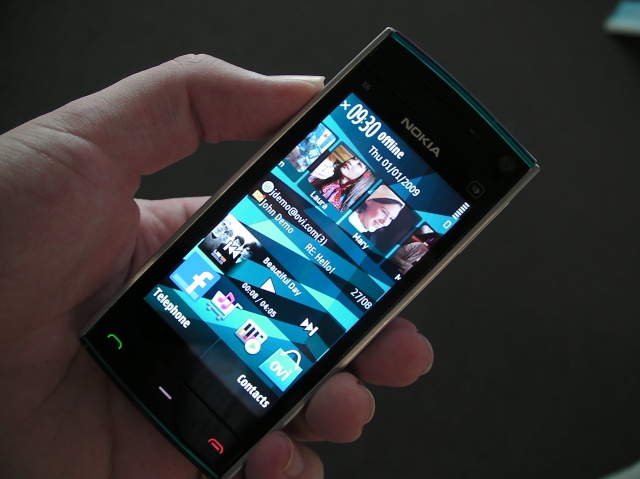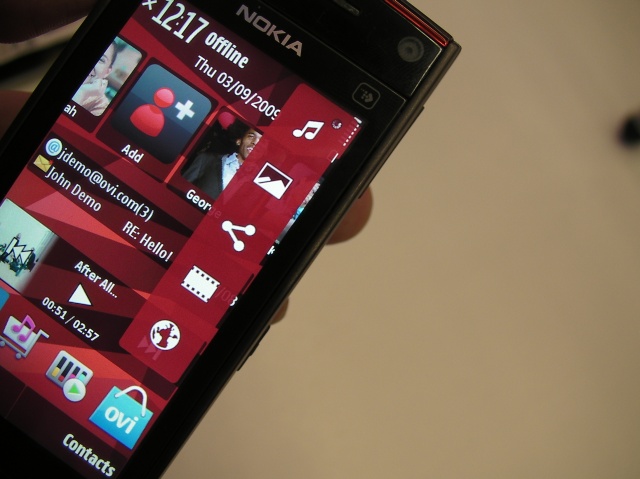And we think that it comes down to the speed of the chips used in the mass memory of the device, or at least seems the most likely explanation.
The simple answer is that Nokia are “using slow chips because they are cheaper”, but that doesn’t tell the full story, or the thinking behind that decision.
Let’s start with impact on the bottom line – the chips themselves might be cheaper on a per unit cost, and that does have an impact on the bill of materials, but the cost of these chips impacts right through the life of the device.
On lower priced smartphones, such as the 5230, this isn’t a decision in the hands of Nokia at all – the phones can all take a microSD card, supplied either by the networks or the retailers as a promotion to buy a certain phone, or by the end user as an additional purchase. Any problems with the cards and it’s a simple matter to exchange or buy another card.
That’s not something easily done with a phone with a mass memory chip inside it, such as the X6 – that’s going to need a return to a service centre and some serious work. Add in the cost of the repair bill to a carriage full of devices, and the need for a reliable chip inside the unit should be clear. And one way to increase the reliability of any computer chip? Slow it down a little bit. A slower chip means less stress, and a longer life.
So as well as the balance of the price on the bill of the materials, there’s also a balance to made in how high a specification chip you should go for compared to the failure rate, all magnified by the cost of the repair.
This isn’t an article to make excuses and somehow justify Nokia’s decision on the X6 32GB (that’s one for Nokia to address), but to highlight just some of the factors involved. It’s not a case of buying the chip that’s the fastest, or with the biggest data bus or cache – nor is it case of going for the bottom line. It’s about getting a good balance between everything that is affected by the decision.
And then there’s the other pesky factor. The end user.
My experience with the X6 32GB is tricky at best (think of the tensions in a coalition government in about two years time). The speed of navigating the music player and my media collection is still one of the biggest issues. When I compare it to the speed and smoothness of my iPhone, the X6 just feels slow and clunky - like it is struggling to do the same job.
Heck, I keep looking over at the 5800 and wonder if I should switch back, because it feels instantaneous and reactive, compared to the X6. Yet I stick with the X6 – partly because it has 32GB of music and I like carrying that on long trips, but also because I love the look and feel of the rest of the device.
The speed of any disk operations isn't a deal breaker - but it’s very close to it. Another example: try to take a lot of pictures in close succession and the slower write speed is apparent as well. Doing a side by side test, the X6 16GB saved a 5 megapixel image to the mass memory roughly twice as fast as the X6 32GB. The different speeds are also evident when editing the images and saving the results. While the music player is the area most obvious to me, there are a number of areas where the mass memory is obviously working at its 'full' speed and I want warp speed.
Here’s something that I hope Nokia are taking into consideration. Something has been tweaked since the 32GB Comes with Music version of the X6 and the newer 16GB version of the X6 to get the general operation back up to an acceptable level. Is it simply a case of using a faster chip? Or a certain sector size? Or something else. Either way, find out what happened, because there’s a certain product coming up that needs to be spot on when it comes out the box – and a slow 32GB mass memory chip could bring the whole experience crashing down in the eyes of the reviewers, tech heads and industry watchers.
Because the last thing needed is for the N8 to suffer the PR failure that the X6 went through at my hands. Put simply, don’t make the N8 feel slow.
-- Ewan Spence, May 2010.


